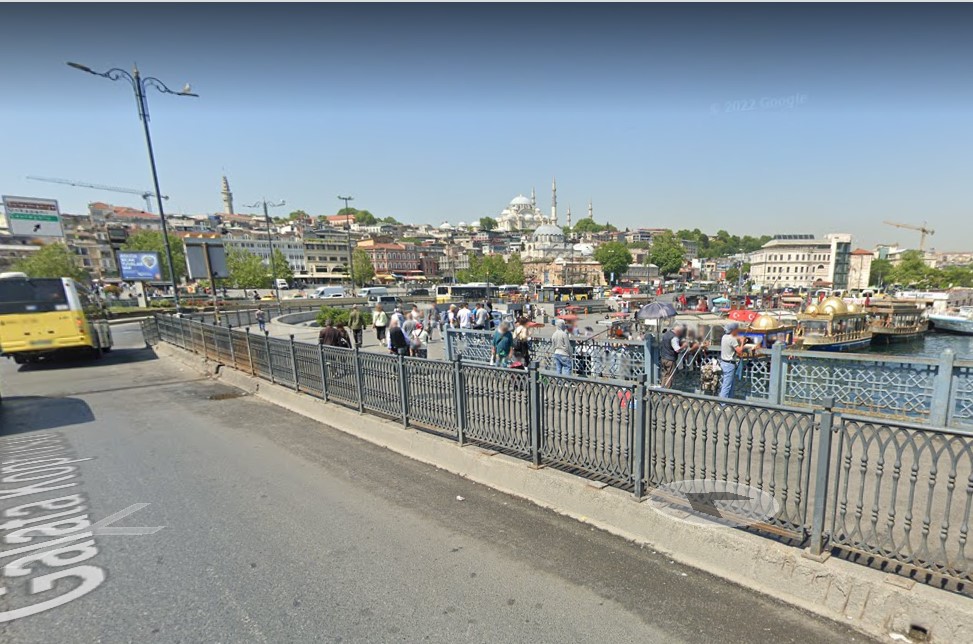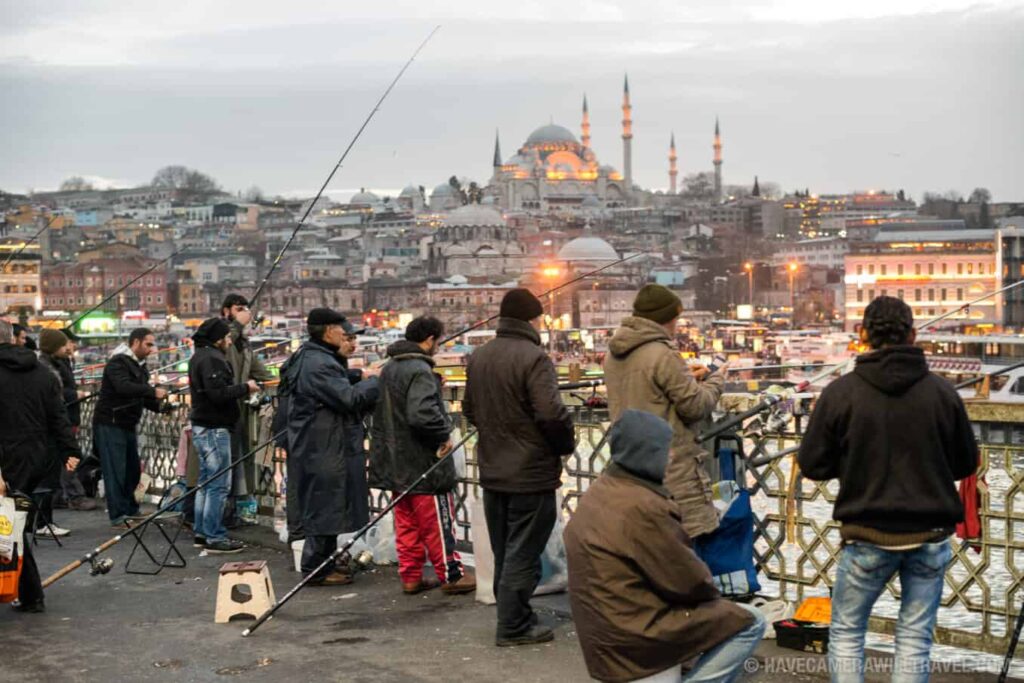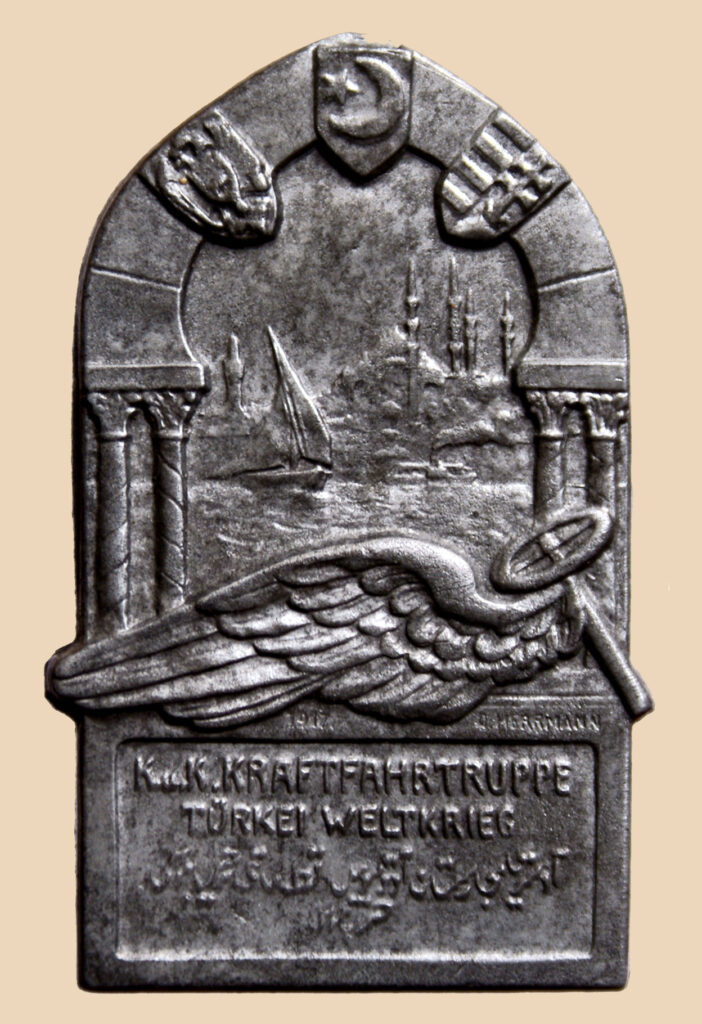Galata bridge
In the series presenting the cities and landscapes of the Monarchy, I can now only show badges on which we see landmarks of other countries. The current badge and the images show one of Istanbul’s famous sights. The Galata bridge spans the Golden Horn Bay. Locals called it new 100 years ago and now it is the old bridge. On one side of the bay and the bridge is the old, medieval city center, and on the other side is the new city center, built from the beginning of the 1900s, including the Galata quarter, from which the bridge takes its name.

Of course, there was already a wooden bridge over the bay in Byzantine times, and later a pontoon bridge. During the Great War, the fourth bridge, built by the Germans in 1912, stood on this site. This pontoon bridge stood until 1992 when it burned down. In its place, a bridge with a permanent structure, which can be opened in the middle, was built in 1994. It is much wider and somewhat longer than its predecessors, and has a three-lane track. It remains one of the important symbols of the city, from which you can see the panorama of both coasts and neighborhoods.

The old and current picture selected for the post was taken towards the end of the bridge at the old town, and on it the dome and minarets of the Suleiman Mosque stand out in the distance. In the old photo, one of the Monarchy’s heavy howitzer batteries is crossing the bridge. In one of today’s pictures, we see a crowd of fishermen in the bay, also with the mosque in the background.

The same panorama can be seen on the badge with the inscription KuK Kraftfahtruppe Türkei. This badge and a larger plaque were made by Lieutenant Gustav Siegfried Herrmann, an Austrian officer assigned to the Turkish mission of the Monarchy, in the winter of 1916 – spring of 1917, as can be read in a contemporary typescript. The contractor was the Vienna company Winter und Adler.




